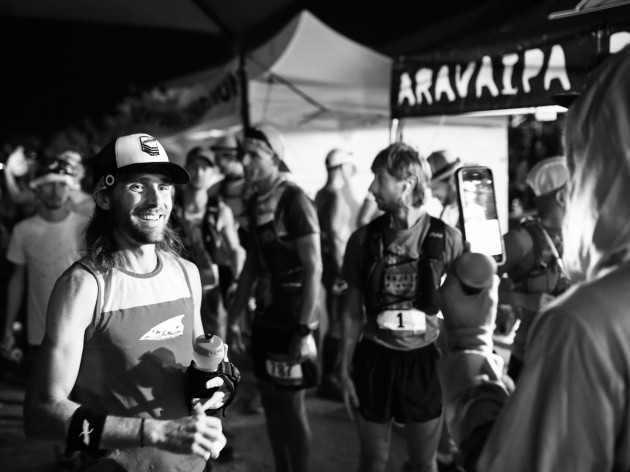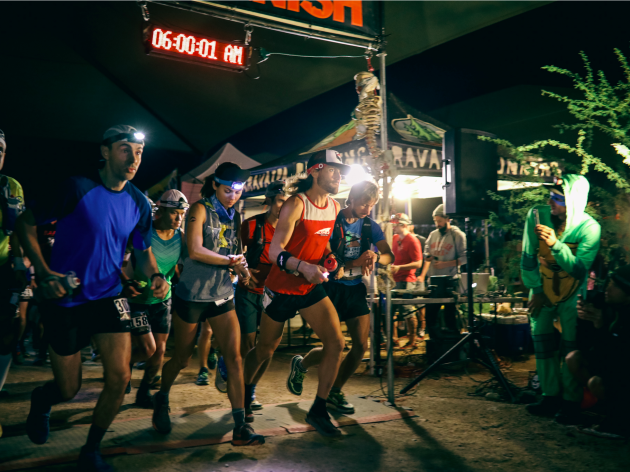
- Australia's largest state hits record-high COVID-19 cases despite weeks of strict lockdown. 'It's a tinderbox ready to explode,' one official said.
- eToro says crypto made up 73% of trading commissions in the last quarter, as retail customers dived in
- A flight attendant says she was too exhausted to report a passenger who shoved her when a flight was overbooked: report
- US jobless claims climb for first time in 5 weeks, to 353,000
WHEN YOU THINK of the rich foods that are so delightful around Christmas, you probably don’t think of pairing them with athletic training.
Typically, we don’t link these sorts of “heavy” foods with sports. Instead, ads promote “lighter,” “quick-burning” fare like sugary sports drinks. If you’re going to indulge in anything the night before a sports event, we’ve traditionally assumed it should be a massive plate of spaghetti — hence the term “carb loading.”
But our dietary presumption about what you “should” eat while training for athletic events that require endurance might be wrong, at least if you follow the training diet of Zach Bitter, an ultrarunner who set the American record for the fastest 100-mile race last year, finishing in 11:40:55 (breaking his own record).
Bitter tells Business Insider that he switched to a high-fat, low-carb diet in late 2011 as he started getting into ultramarathons. He’d been struggling with swelling and inflammation after the long training sessions and races and decided to see if a nutritional change would help. He started looking into different options, listening to nutrition podcasts, and experimenting with high fat diets like the Atkins regimen. Since then, he says that he’s felt healthier and raced faster, recovering better than he was before.
Bitter also coaches other runners, and he recommends they try similar high-fat nutritional strategies, regardless of their fitness level. He credits this dietary change, along with physical training, with improvements in their performance.
“From middle- to back-of-the-packers to people who are looking to podium … if they follow the programme right, I have not seen any athlete that has come to me not have a successful outcome from it,” he says.
Fueled by fat
The goal of switching to a high-fat diet like Bitter’s is to become what athletes and nutritionists refer to as “fat-adapted.”
Our bodies normally first try to burn through our glycogen energy stores, which are easily accessible and we get from breaking down carbohydrates. After we burn through those glycogen energy stores, our bodies eventually can start getting energy by burning through ketones, energy produced from fatty acids (basically, energy from fat).
In most people, there’s some “mild biological stress” as we move from burning glucose to getting energy from ketones, according to Mark Mattson, chief of the laboratory of neurosciences at the National Institute on Aging at the National Institutes of Health. Those people feel drained or tired during that stressful time. If they become totally depleted of glycogen stores, this is known as “bonking.”
But people who are “fat adapted” can make that switch to burning available glucose to burning fat much more easily.
Some people try to hit that fat-adapted state through intermittent fasting; others, like Bitter, try to get their bodies to naturally switch over to being more fat adapted — to more easily use fat for fuel — by switching their diets.
This idea that you can become fat-adapted, avoid the “bonk,” and more easily fuel your body with its own fat during endurance events has been studied before, and there’s some controversy about how effective it is.
But in recent years, even scientists who were convinced it wasn’t a performance-enhancing strategy have started to reconsider. For example, in 2015, sports nutrition researcher Louise Burke, writing in the journal Sports Medicine, wrote that even though she had previously written that researchers had put the “nail in the coffin” on the idea that fat adaptation worked, there did seem to be some evidence that in certain cases, these low carb high fat diets may be a help.
Successful ultra-distance athletes like Bitter and Timothy Olsen and alpinists like Steve House, along with many others, find these fat-adapting strategies useful. Still, it’s also possible that these diets work better for some people than for others.
“Everyone is different — it was developing what worked for me, for my lifestyle,” says Bitter.
From training day to race day
Bitter doesn’t completely cut out carbs. He says that during “base training” or lower intensity time periods, he’ll cut them out the most, eliminating refined carbohydrates and starches along with high-carb fruits. The goal of this time period is to help his body adapt to fat as a fuel source.
As the training intensity picks up over time, he’ll reintroduce some carbohydrates, though he’ll still rely on a fat-heavy diet: “I’ll do a lot of the things like coconut oils, duck fats as a base of sautéing vegetables, bacon and eggs, nuts, seeds, and then a lot of stir fry type dishes that are based in fats.”
But when race day comes around, he will consume carbs throughout the race as a source of easy fuel (eating fat during a race is tough, he says, since the digestion process is slower). But he says that having a body that more effectively fuels itself from fat has let him cut down on the amount of food he needs to eat.
“I used to take in about 100 grams of carbs per hour [in a race], I’m now down to between 20 and 40.” For context, a typical running gel-pack has about 22 grams of carbs and is around 110 calories, while a slice of wheat bread has about 13 grams of carbs and 70 calories.
And at least for Bitter, the record-setting race times are a sign that things are working.
So if you’re chowing down on rich meals over the break — even if they’re not as healthy as the high-fat meals mentioned by Bitter — don’t think of the fat content as something that’s necessarily unhealthy, though you may want to take it easy on the mashed potatoes.
And certainly don’t think of “heavy meals” as an excuse not to go for a run.
Think of them, perhaps, as fuel.
- Kevin Loria


